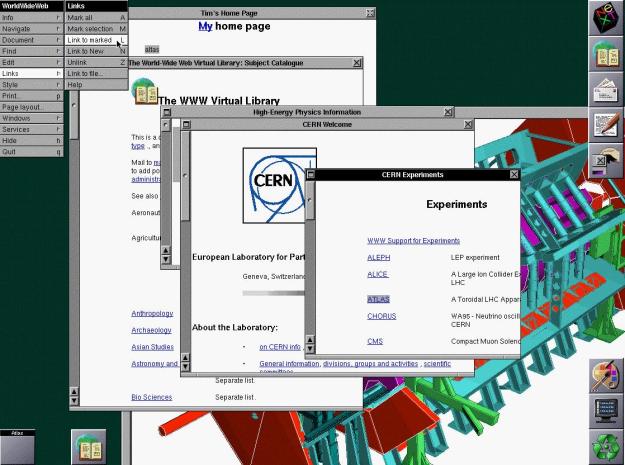
We’re all pretty immersed with our digitally-driven lives, probably too preoccupied with our gizmos, gadgets, and social media accounts to even wonder how we got to be so technologically advanced in this day and age. Ever wonder about the Internet’s origin, or why it’s absolutely free to be used by anyone with a connection? Do you remember your very first encounter with the World Wide Web? It was 20 years ago today when Sir Tim Berners-Lee – a British scientist at CERN – made the Internet as we know it and the technology that drove it completely royalty-free, which basically meant anybody in the world could use it .
 The Internet’s humble beginnings
The Internet’s humble beginnings
From 1989 to the following year, Berners-Lee along with Belgian systems engineer Robert Cailliau wrote and developed a proposal outlining the use of a global hypertext system, which would later on be referred to as the World Wide Web. In the proposal, terms pertaining to the use of the web were identified, including the way a web of hypertext documents (what we now know as HTML) could be viewed by browsers. In late 1990, demonstrations of their project’s prototype began. Since the project was originally intended to make information dissemination between scientists stationed in various locations around the world easier, an interface was developed on NeXT computers and applied so that people within CERN would be encouraged to use and test it out themselves. To this day, the original NeXT computer is on display at the Microcosm exhibit in Switzerland. According to CERN, it still bears the handwritten label that says, “This machine is a server. DO NOT POWER IT DOWN!!”
Web in the 90s
As it was, only a select few had complete access to the NeXT computer that ran the first-ever browser. In 1991, CERN proceeded to develop a basic browser that could run on any system or computer. Complete with software, library, and functions that allowed other developers to modify the browser according to their needs, the new WWW system was quickly implemented by various schools and research centers.
The first Web server finally reached the U.S. and came online in 1991 at the Stanford Linear Accelerator Center. By that time, two versions of the browser were available – to further develop the newer one, Berners-Lee took to the Internet to reach out to other developers who would like to contribute. Quite a few were successful, the most notable one being the Mosaic, the very first graphical browser released by Marc Andreessen, Eric Bina, and others at the National Center for Supercomputing Applications. This browser, along with the Web, gained media attention – the corporation founded to back it up would later on be known as Netscape. In April 1993, CERN made the decision to make the Web protocol and code available for everyone to use, partly to usurp other institutions’ plans to charge for it in the future.
Where we are now
Since then, people’s exposure to the World Wide Web just kept growing. In 1994, 2 million computers were connected to the Internet and were specifically intended for academic use only; in 2012, there were 2.4 billion Internet users worldwide, from all walks of life. Radio stations, newspapers, book stores, and search engines began infiltrating Web space. Blogging started becoming a global phenomenon. The dot-com market rose then crashed again. Google started becoming a household name, alongside Wikipedia. iPods were released. File-sharing services were founded. Billions of webpages were created and visited on a daily basis, one of them being MySpace. Soon it was Facebook and Twitter and YouTube. After 10 years of being available to the general public, the World Wide Web began seeing the development of more online and portable technology, and more households were able to access highspeed Internet access that was available 24/7. People started turning to the Internet for entertainment purposes, which used to be exclusive to television. The rest is – as cliché as it sounds – history. And it’s only getting better.

As a tribute to the 20 years we’ve all experienced connected to the Internet and an even bigger part of their initiative to restore digital treasures associate with the birth of the Web, CERN has decided to bring all of us back to the World Wide Web’s roots and republish an updated version of the very first web page address, http://info.cern.ch/hypertext/WWW/TheProject.html. Compared to the visually graphic and cleverly designed websites that recently won at the Webby Awards, it’s pretty plain and simple – but it’s definitely a clear sign of just how much the Internet has evolved.



